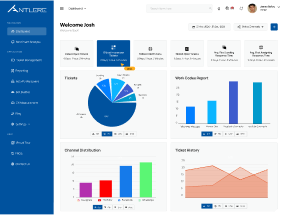Is the Customer Always Right in Call Center Environments?
In the fast-paced environment of a call center, customer interactions can range from routine inquiries to heated disputes. For example, an agent may receive a call from a customer insisting their order was never delivered, even though tracking data clearly shows it was marked as “delivered.” Despite the agent calmly explaining the situation, the customer continues to argue and demands a refund.
In another situation, a customer complains about long wait times for support. However, call logs reveal that the customer repeatedly disconnected after only a few minutes, never allowing the queue to resolve. The agent must carefully balance empathy with factual clarity.
These real-world scenarios highlight an important reality: while customer feedback is valuable, the belief that the customer is always right does not always align with the facts.
Why Is the Customer Not Always Right?
You have likely heard the phrase “The customer is always right” across many areas of the service industry. While the intention behind this philosophy is to emphasize respect and care, it does not mean customers are always factually correct or that employees deserve less respect. In practice, there are several reasons why the customer is not always right.
5 Reasons Why the Customer Is Not Always Right
1: Misunderstanding of Policies
Customers may not fully understand company policies, which can lead to unrealistic expectations. For instance, a customer might demand a full refund for a Daewoo Express ticket cancellation, even though the policy clearly states that only a 70% refund is applicable.
While the customer may feel justified, the policy was communicated at the time of purchase. Employees are required to follow these guidelines while managing emotional reactions, making clear communication and policy education essential.

2: Emotional Reactions
Customer service interactions often occur in high-stress situations. A customer who has had a difficult day may overreact to a minor issue, such as a delayed package, and demand immediate compensation.
Although empathy is important, agents must also respond calmly and objectively. Emotional reactions can lead to excessive demands that are not grounded in the actual situation, challenging the idea that the customer is always right.
3: Misinformation
In the digital age, customers frequently rely on outdated or incorrect information. A customer may assume a service is included in their subscription due to misleading advertisements or old data.
When support teams clarify the facts, friction can arise. While the customer may believe they are correct, their understanding is often based on misinformation, reinforcing that the customer is not always right.
4: Unreasonable Expectations
During peak periods, such as holidays, customer expectations can become unrealistic. A customer may expect immediate assistance despite high call volumes and extended wait times.
This highlights the importance of managing expectations through transparent communication. While businesses should aim to provide excellent service, it is reasonable to say no when a request exceeds practical limits.
5: Blame Shifting
Some customers attempt to shift responsibility for their own mistakes onto the company. For example, providing incorrect information during a purchase and later demanding accountability when issues arise.
Agents must professionally redirect the conversation to factual details and shared responsibility. While feedback is important, the idea that the customer is always right can sometimes be used to avoid accountability.

Why Understanding the Full Customer Experience Matters
The belief that the customer is always right has long shaped customer service philosophy. However, misunderstandings of policies, emotional reactions, misinformation, unrealistic expectations, and blame shifting demonstrate the complexity of customer relationships.
Recognizing that customers can sometimes be wrong allows businesses to maintain balance—upholding policies while still delivering empathetic support. Abacus Outsourcing understands these challenges and equips its professionals to manage customer interactions with clarity and compassion.
Accepting that the customer is not always right helps create a healthier and more productive customer service environment, reinforcing the idea that what is popular is not always right.









